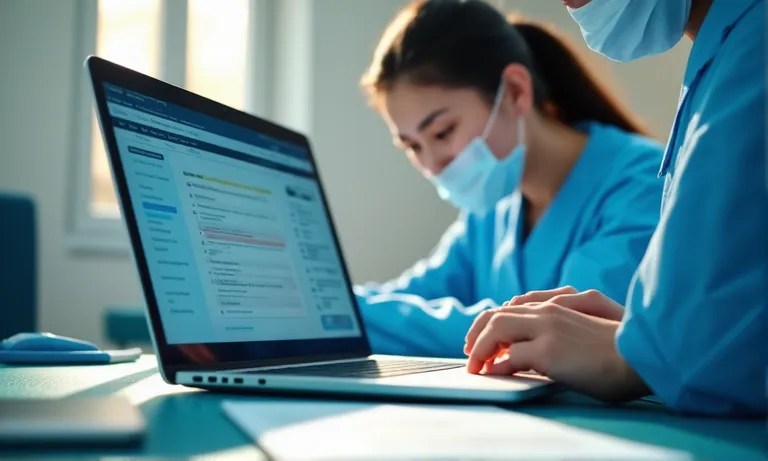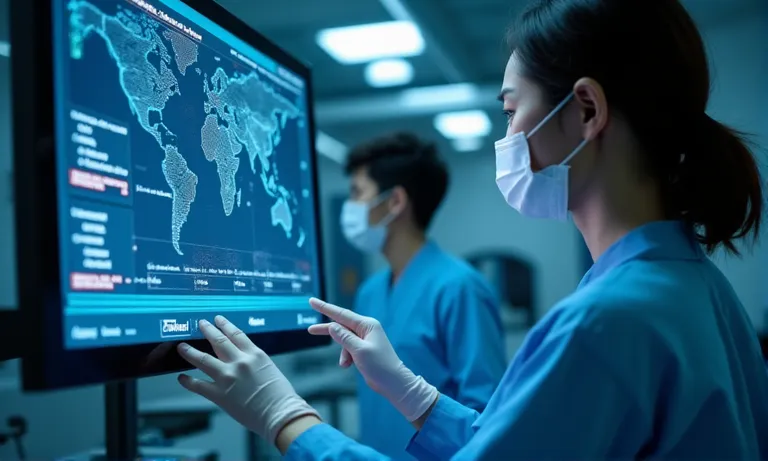For dental procurement teams and lab coordinators, seamless communication is no longer a preference—it’s a baseline requirement for digital collaboration with external dental labs. As digital workflows become the norm in restorative production, ensuring that communication tools support real-time updates, traceable approvals, and time zone coordination is essential to reduce delays and avoid costly remakes.
To evaluate a dental lab’s digital communication readiness, consider these core dimensions:
- Platform Readiness – Does the lab provide a centralized case portal with live status tracking, approval checkpoints, and version control?
- Process Transparency – Are messages and actions timestamped, logged, and accessible throughout the case lifecycle?
- Asynchronous Coordination – Can the lab maintain responsiveness across time zones through alerts, digests, or regional account managers?
- Pre-purchase Validation – Is demo access available? Are there documented SLAs for urgent updates and communication turnaround?
Understanding and verifying these capabilities helps procurement teams not only prevent workflow breakdowns, but also establish scalable, long-term partnerships with aligned expectations around speed, visibility, and accountability.
Why Is Seamless Communication Crucial in a Digital Lab Partnership?
In cross-border dental partnerships, communication is not just an operational tool—it’s a foundation for accuracy, speed, and mutual accountability. As labs and clinics increasingly rely on digital workflows, gaps in communication create cascading risks, from delayed approvals to production errors. The ability to exchange information clearly, in context, and in real time has become a non-negotiable element of modern dental outsourcing.

digital-dental-lab-communication-ecosystem
How do communication gaps impact restoration timelines and accuracy?
Delays in replying to design approvals, sending missing files, or clarifying specs can derail timelines and compromise outcomes.
- A missed case approval can delay shipment by 1–2 working days.
- File re-requests often cause repeat uploads, version mismatches, or lost production windows.
- Labs may hold cases in queue while awaiting clarification, creating bottlenecks.
Inconsistent communication leads to more remakes, patient chair-time waste, and frustrated clinical teams.
Why are traditional communication methods insufficient for digital workflows?
Legacy methods like email, WeChat, or phone calls don’t scale with digital collaboration.
- Email chains lack centralized tracking or version control.
- Voice or messaging apps don’t log formal approvals or timestamp key actions.
- File attachments get separated from case context, increasing the risk of errors.
In contrast, modern systems bundle messages, visuals, approvals, and case data in one trackable thread—essential for complex or multi-case workflows.
What defines “seamless” in cross-border lab collaboration?
Seamlessness means communication that is persistent, contextual, and integrated.
- Persistent: Nothing is lost in transmission; records are stored and retrievable.
- Contextual: Every comment ties directly to a case, design, or specific issue.
- Integrated: Communication links to file versioning, technician actions, and shipping alerts.
In digital lab partnerships, seamless communication isn’t a bonus—it’s an infrastructure layer that protects clinical intent across borders and time zones.
✅ Seamless digital communication ensures accuracy and predictability in global lab partnerships – TRUE
It reduces avoidable errors, clarifies expectations, and keeps production moving without guesswork.
❌ Assuming email and messaging apps are sufficient for modern lab coordination – FALSE
Traditional methods don’t support approvals, version history, or SLA compliance, creating avoidable miscommunication.
What Communication Tools and Platforms Are Commonly Used by Digital Dental Labs?
Modern dental labs no longer rely on fragmented communication. Instead, they use integrated digital platforms to centralize case tracking, feedback, approvals, and messaging—making collaboration faster, clearer, and traceable.
These tools aren’t just conveniences; they are core infrastructure for reducing production delays, avoiding remakes, and maintaining client trust.

digital-dental-lab-platform-dashboard
Are case management portals standard across modern labs?
Yes—especially among labs that serve international or high-volume clients.
- These portals provide centralized access to all case data, including design previews, status updates, and modification logs.
- Clinics no longer need to chase updates via email or phone—every case is timestamped and traceable.
- Most portals are web-based and require no local installation, making access seamless from any device.
For multi-location DSOs or mobile clinicians, these systems are indispensable.
What features should a digital lab dashboard include?
A robust lab dashboard includes more than just progress bars. Key features often include:
- Live case status updates across all open cases
- Comment threads and technician notes linked to case ID
- Upload history logs with file versioning support
- Design approval modules with visual markup tools
- Automated alerts for milestones, delays, or incomplete submissions
Well-designed dashboards reduce miscommunication and improve case turnaround by enabling asynchronous, contextual collaboration.
How do cloud-based platforms support file exchange and feedback loops?
Cloud-based systems make it easier to upload, preview, and revise 3D files without download friction or version loss.
- Many platforms support STL, PLY, and DICOM formats with in-browser visualization.
- Comments can be attached directly to models or screenshots for clarity.
- Feedback loops are logged with date/time stamps, user identity, and response status.
According to a recent overview of lab digitization, cloud-based platforms reduce turnaround friction by 20–30% in clinics using structured case portals.
Core Platform Capabilities Summary
- Web-based case management portals with file + message integration
- Technician-linked comment threads and version control
- Visual approval systems supporting markup and annotations
- Cloud-native file sharing with STL and PLY compatibility
- Notification architecture for case movement, errors, or delays
Together, these tools create a collaborative environment where both clinics and labs operate with confidence, transparency, and speed.
How Can Buyers Evaluate a Lab’s Communication System Before Committing?
Not all digital labs offer the same level of communication transparency. Before selecting a partner, it’s critical to assess whether a lab’s systems are structured, trackable, and designed to support accountability—not just convenience.
While many labs claim to offer digital coordination, only some provide the verification mechanisms needed to maintain reliable case flow under pressure.

dental-lab-dashboard-evaluation-checklist
Can the lab provide demo access to their portal or dashboard?
Ask for a sandbox login or guided walkthrough.
- Labs with confidence in their platform usually provide temporary access or recorded demos.
- This lets procurement teams verify the interface, workflow, and transparency level before committing.
- Be wary of vendors who describe features verbally but can’t demonstrate real-time system behavior.
Seeing the system in action is more valuable than reading about it.
What kind of update logs or file version history is available for review?
Transparent systems log every file upload, approval action, and revision step.
- Logs should include timestamps, user IDs, and file types (e.g., updated STL, marked-up preview).
- For multi-clinic groups, access to case history across locations is crucial.
- Some systems allow filtering logs by status (pending, approved, rejected) or by team member.
Version history ensures accountability across both clinic and lab users.
Are notifications timestamped and tracked during the case lifecycle?
Automated notifications are only useful if they’re structured and traceable.
- Labs should show a record of when alerts were triggered and whether they were acknowledged.
- Examples: “Design ready for approval – sent 10:32AM CST, read 11:02AM”, or “Revision submitted – no response in 48h.”
- Timestamps allow clinics to identify workflow bottlenecks and ensure SLA timelines are met.
Labs using structured alerts usually integrate SLA reminders directly into their communication flow.
✅ Labs that offer demo access and timestamped logs demonstrate true system transparency – TRUE
They enable clients to preview and verify real functionality before entering a contract.
❌ Assuming any lab with a “portal” provides structured, traceable communication – FALSE
Some platforms offer only cosmetic interfaces without audit logs, case versioning, or SLA visibility.
How Do Labs Handle File Transfers, Case Feedback, and Update Logs?
In a fully digital workflow, labs must go beyond receiving files—they need to ensure those files are compatible, traceable, and contextually linked to clinical instructions. From STL models to diagnostic images, every file plays a role in shaping the final restoration.
Labs with mature digital protocols don’t just accept uploads—they create closed-loop systems that log, track, and validate every change along the way.

dental-lab-digital-file-feedback-system
What file types and formats (STL, PLY, DICOM) are supported?
Modern labs should accept a full spectrum of digital formats across various case types.
- STL: Used for crown, bridge, and aligner workflows. Standard in CAD/CAM systems.
- PLY: Supports texture and color—essential for implant guides or shade documentation.
- DICOM: Radiographic files used for surgical guide planning and diagnostics.
Ideally, the platform previews files in-browser, reducing the need for offline software.
How are approvals, modifications, and comments tracked?
Effective labs create threaded feedback systems:
- Comments are tied to visual references (screenshots or 3D model views).
- Approval or rejection actions are timestamped and stored with user ID.
- All parties can access a single version of the truth—no more conflicting file folders.
This minimizes errors from ambiguous email chains or version conflicts.
Are previous case records and revision histories accessible?
Yes—in robust systems, every case has a structured history.
- Past uploads, technician actions, comments, and response times are logged.
- This is critical for recurring clients or multi-step cases (e.g., temp-to-final workflows).
- Some platforms even let you duplicate previous designs as starting templates.
With this level of access, clinics can diagnose issues, reuse successful designs, or provide evidence during disputes.
Key Mechanisms Summary
- Support for STL, PLY, and DICOM formats with in-browser visualization
- Feedback threads tied to 3D views and technician annotations
- Timestamped approval history with user attribution
- Case log archives accessible to both clinic and lab
- Built-in design duplication and version rollback tools
When digital assets are tracked, versioned, and interpreted in clinical context, labs become not just producers—but accountable collaborators.
What Mechanisms Help Labs Manage Time Zones and Emergency Coordination?
Time zone differences are often cited as barriers in global lab-clinic partnerships—but well-structured communication systems can make distance invisible.
A lab’s ability to manage urgency, respond across hours, and escalate when needed is what separates a responsive vendor from a risky one.

global-dental-lab-timezone-management
Are asynchronous channels like automated alerts or update digests available?
Well-prepared labs rely on systems that don’t require both sides to be online simultaneously.
- Daily case summaries, revision request digests, and automated milestone notifications keep clinicians informed regardless of time.
- Labs tag urgent actions that will be picked up by the first available shift.
- Some systems even allow client teams to schedule messages to align with the lab’s working window.
Asynchronous channels reduce missed updates and prevent overnight bottlenecks.
Is there regional account support aligned with your local time?
Some labs assign regional coordinators or multilingual support agents available during client business hours.
- U.S.-based support during EST/PST hours can bridge communication.
- Regional escalation points improve SLA adherence without needing direct technician contact.
- Localized support also helps with billing questions, onboarding, or material sourcing conversations.
This hybrid coverage model strengthens response reliability during your core hours.
How are urgent case escalations managed across time zones?
Urgency doesn’t follow a schedule, so labs must prepare for exception handling.
- Dedicated escalation queues with internal flags (e.g., “Surgery in 48h,” “Patient leaving town”)
- Supervisor-level alerts when deadlines are at risk
- Optional overnight prep shifts that enable early-morning U.S. delivery or finalization
True emergency coordination requires not just willingness, but structured fallback pathways.
✅ Global labs with async alerts, escalation logic, and regional coverage ensure dependable response—even across time zones – TRUE
These systems convert geographical distance into predictable operational flow.
❌ Assuming time zone gaps automatically lead to delays and miscommunication – FALSE
Modern digital labs integrate layered support systems to maintain responsiveness regardless of clock differences.
What Should You Ask a Lab to Confirm Communication Readiness?
A lab’s communication promise means little without clear systems to back it up. Before formal onboarding, clinics and procurement leads should ask precise, operational questions that reveal how structured, traceable, and scalable the lab’s communication really is.
These aren’t just IT questions—they’re partnership readiness questions.

dental-lab-procurement-communication-checklist
Do you have a dedicated case portal and file-sharing interface?
This is the baseline of digital readiness.
- Ask whether it supports real-time status tracking, file uploads, approvals, and logs.
- Confirm whether each case has a single source of truth with version control.
- Review screenshots or demo links to validate system design.
A “yes” without proof isn’t enough—request visual or login-based verification.
How fast do you typically respond to communication-related queries?
Labs should provide average response time benchmarks for:
- Design clarifications
- Approval requests
- File-related technical issues
For urgent cases, ask if they offer guaranteed SLA-based response within 2–4 hours. Documented response speed = real accountability.
What’s your average SLA for urgent updates or revisions?
Urgent cases require a separate handling logic.
- Ask whether they prioritize flagged messages (e.g., “Patient leaving tomorrow”).
- Check if there’s an escalation matrix with backup reviewer logic.
- Confirm if logs exist to track revision loop duration.
SLAs are only meaningful if tracked and enforced in daily workflows.
Communication Readiness Checklist Summary
- Is there a live-access case portal with logs and feedback threads?
- Do average response times fall within same-day business windows?
- Is there a formal escalation plan for urgent or unresolved requests?
- Are approvals and revisions timestamped and traceable by user?
- Can you test the system or access a guided demo before onboarding?
When procurement teams ask these questions, they shift from guessing vendor readiness—to verifying it.
Conclusion: Communication Is Not a Feature—It’s a Foundation
In modern dental outsourcing, a lab’s ability to communicate is as critical as its ability to mill a crown or scan a model. From asynchronous alerts and timestamped logs to escalation protocols and portal demos, communication systems aren’t secondary—they are the scaffolding that holds every workflow together.
Labs that treat communication as a structured, measurable process—not just ad-hoc coordination—create fewer errors, reduce case friction, and build trust that lasts beyond a single restoration.
For procurement leaders and clinicians alike, the takeaway is simple: ask for systems, not just service promises. Because in digital dentistry, how a lab communicates reveals how it truly operates.


